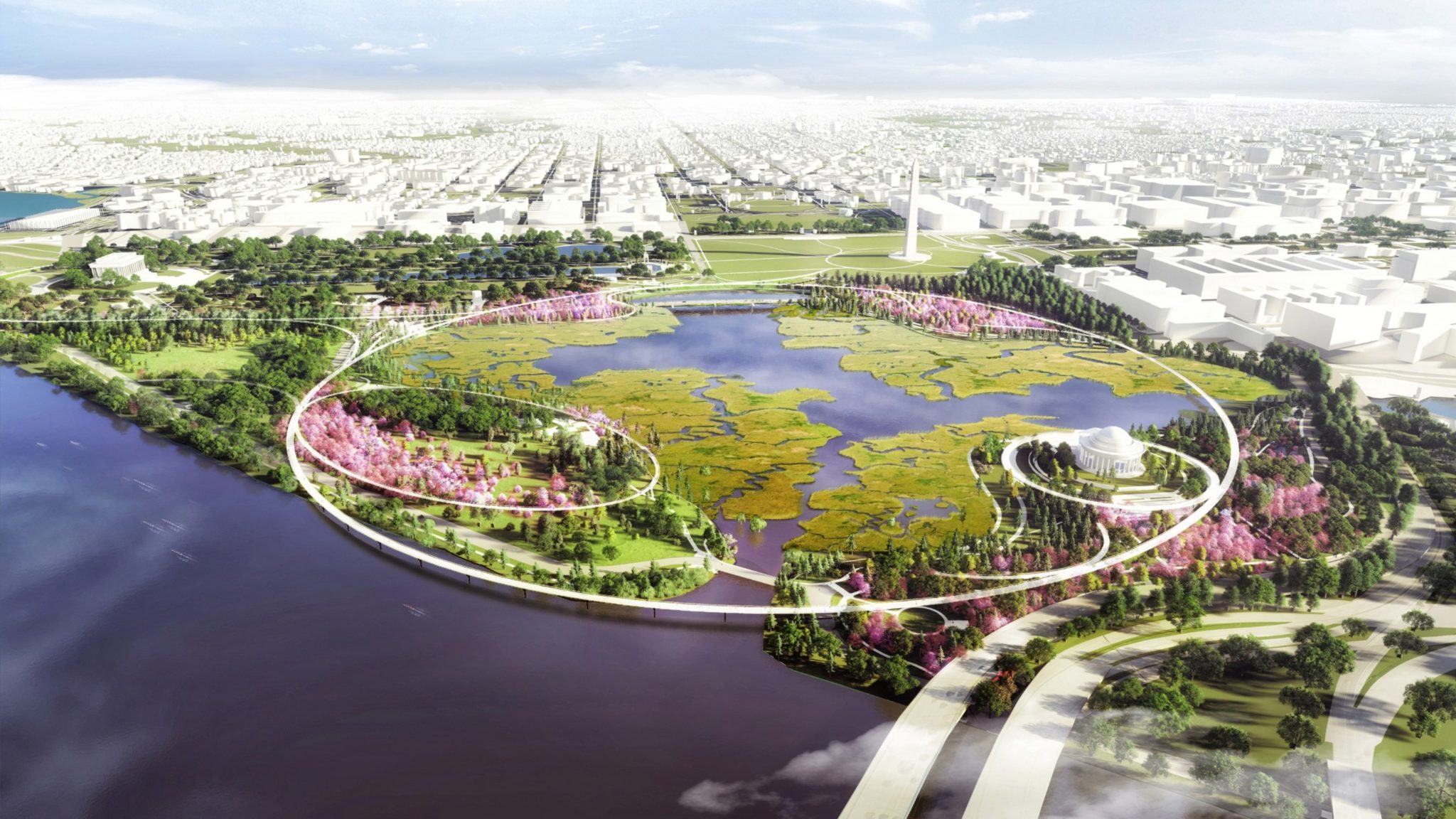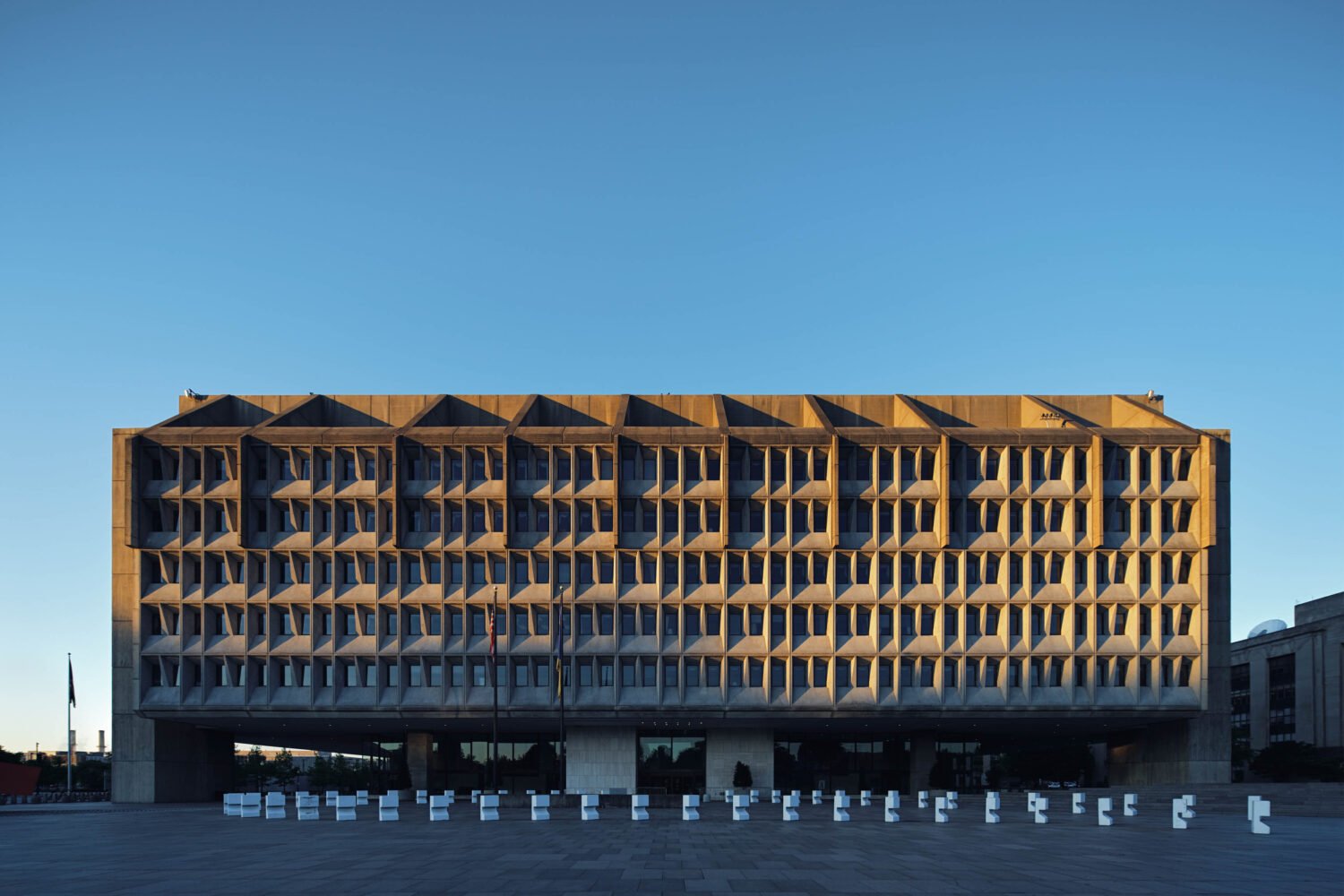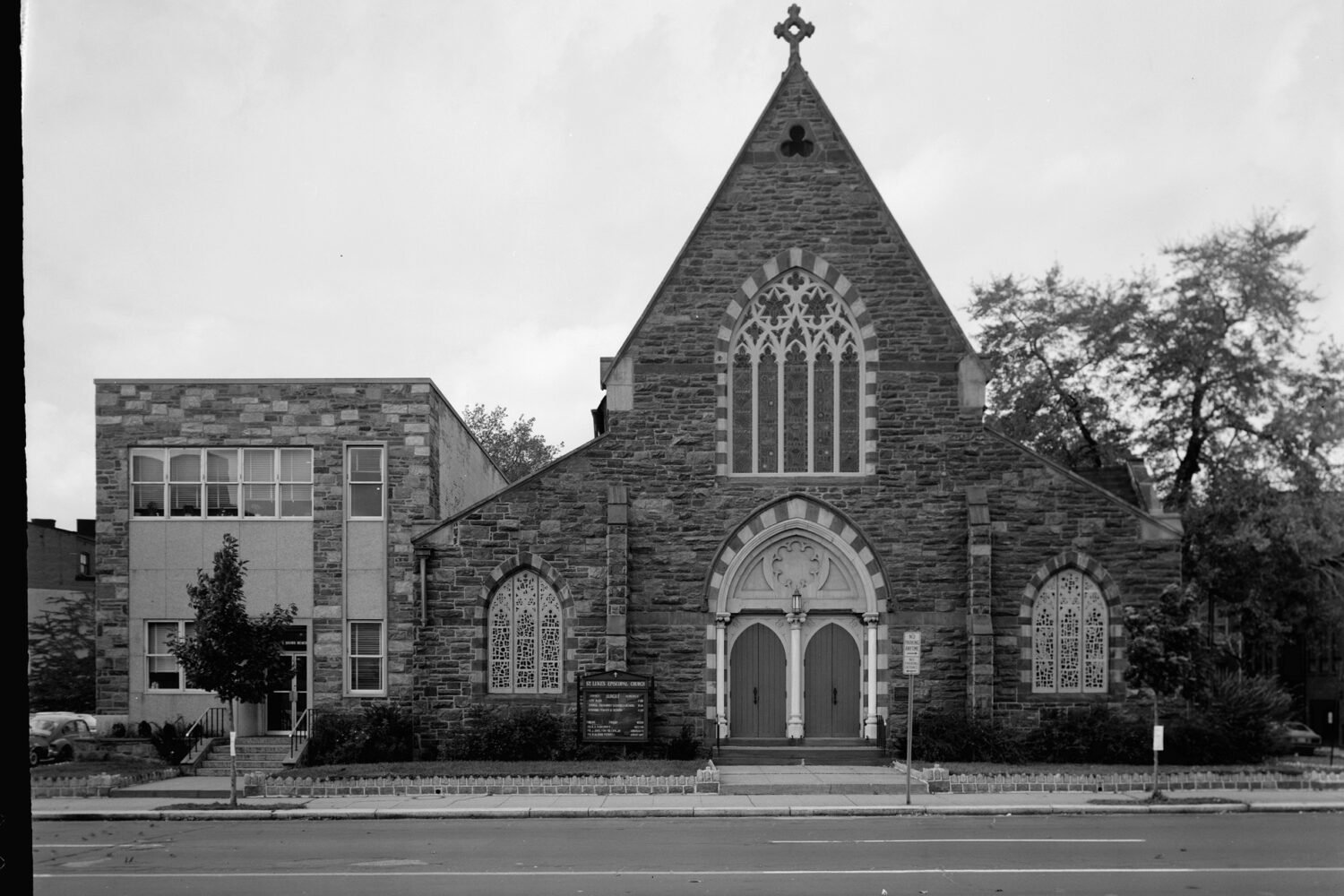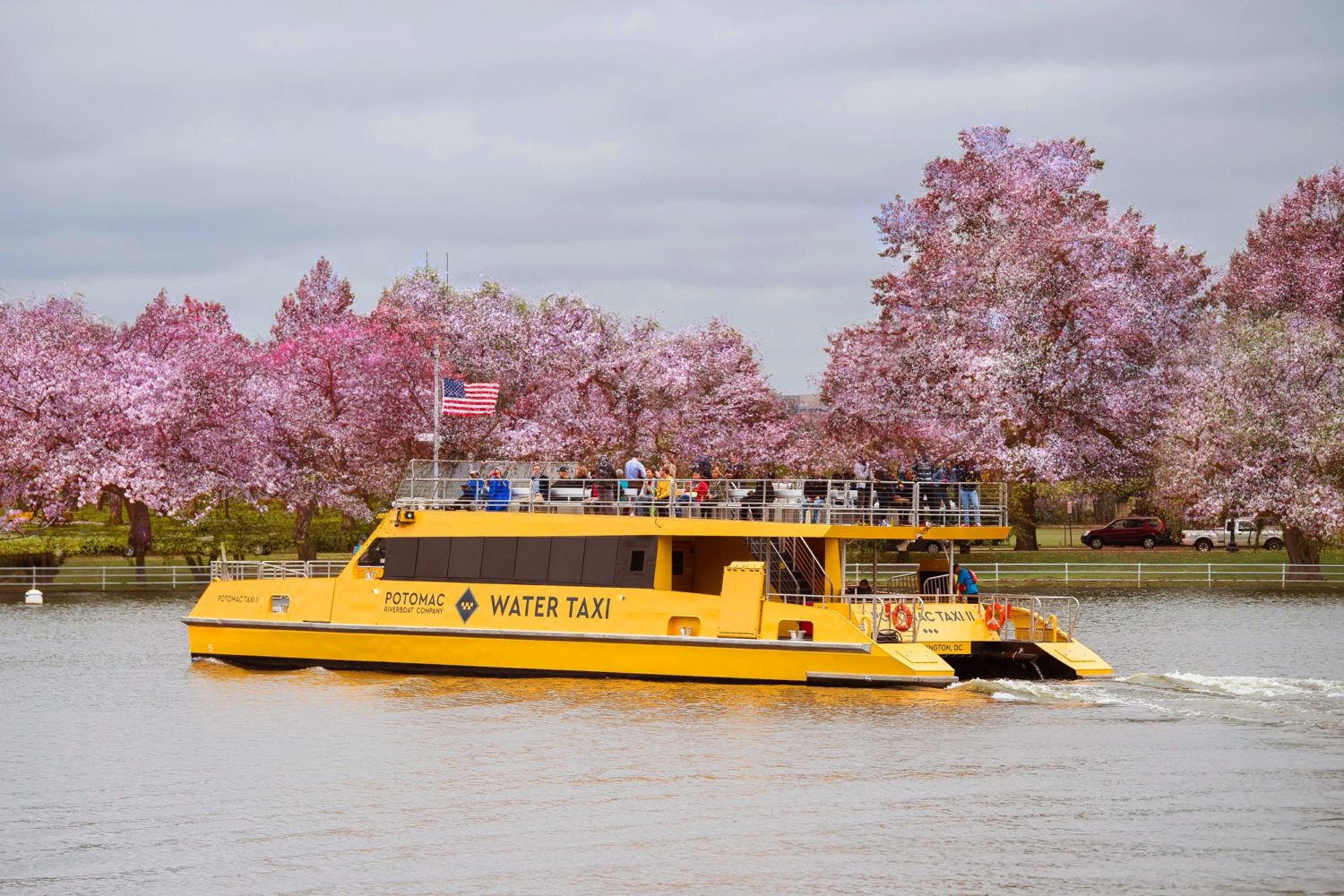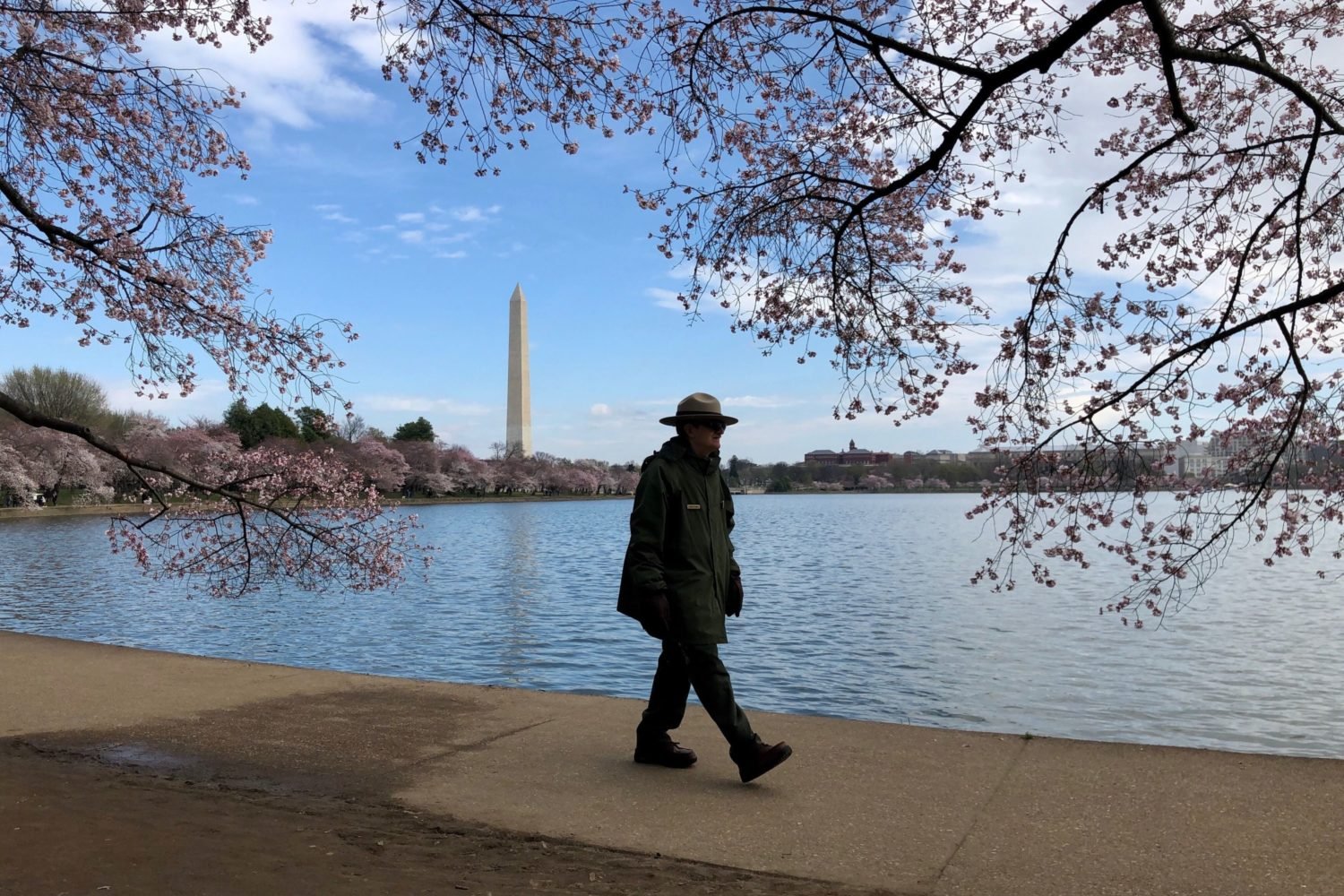Could there one day be a land bridge extending from the Jefferson Memorial through the Tidal Basin?
Perhaps, at least according to the Tidal Basin Ideas Lab, which released renderings from five architects that depict possible renovations of the historic area. The Ideas Lab aims to address the Tidal Basin’s flooding and deteriorating infrastructure by bringing design and sustainability leaders together to collaborate on solutions. It’s part of the campaign underway to raise the awareness and funds to renovate the Tidal Basin, a project estimated to cost around $500 million.
The National Trust for Historic Preservation, the National Park Service, and the Trust for the National Mall have joined forces to spearhead the Ideas Lab.
As part of the campaign, five landscape architecture firms were picked to reimagine the space: DLANDstudio, GGN, Hood Design Studio, James Corner Field Operations, and Reed Hilderbrand. This wasn’t a design contest, per se, but more an opportunity for the design leaders to brainstorm and share ideas for preserving the space.
Below, the renderings of what a future Tidal Basin could look like:
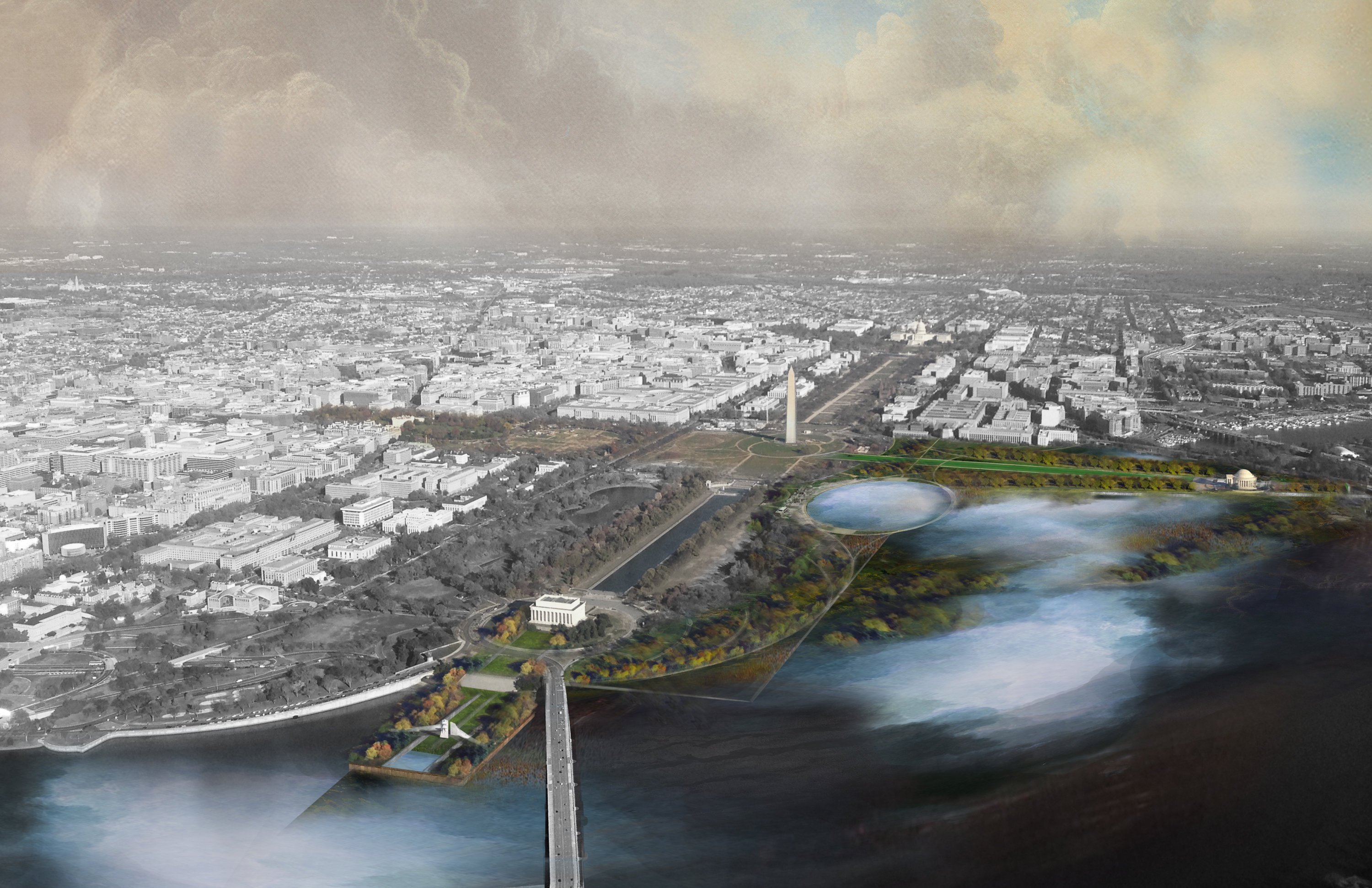
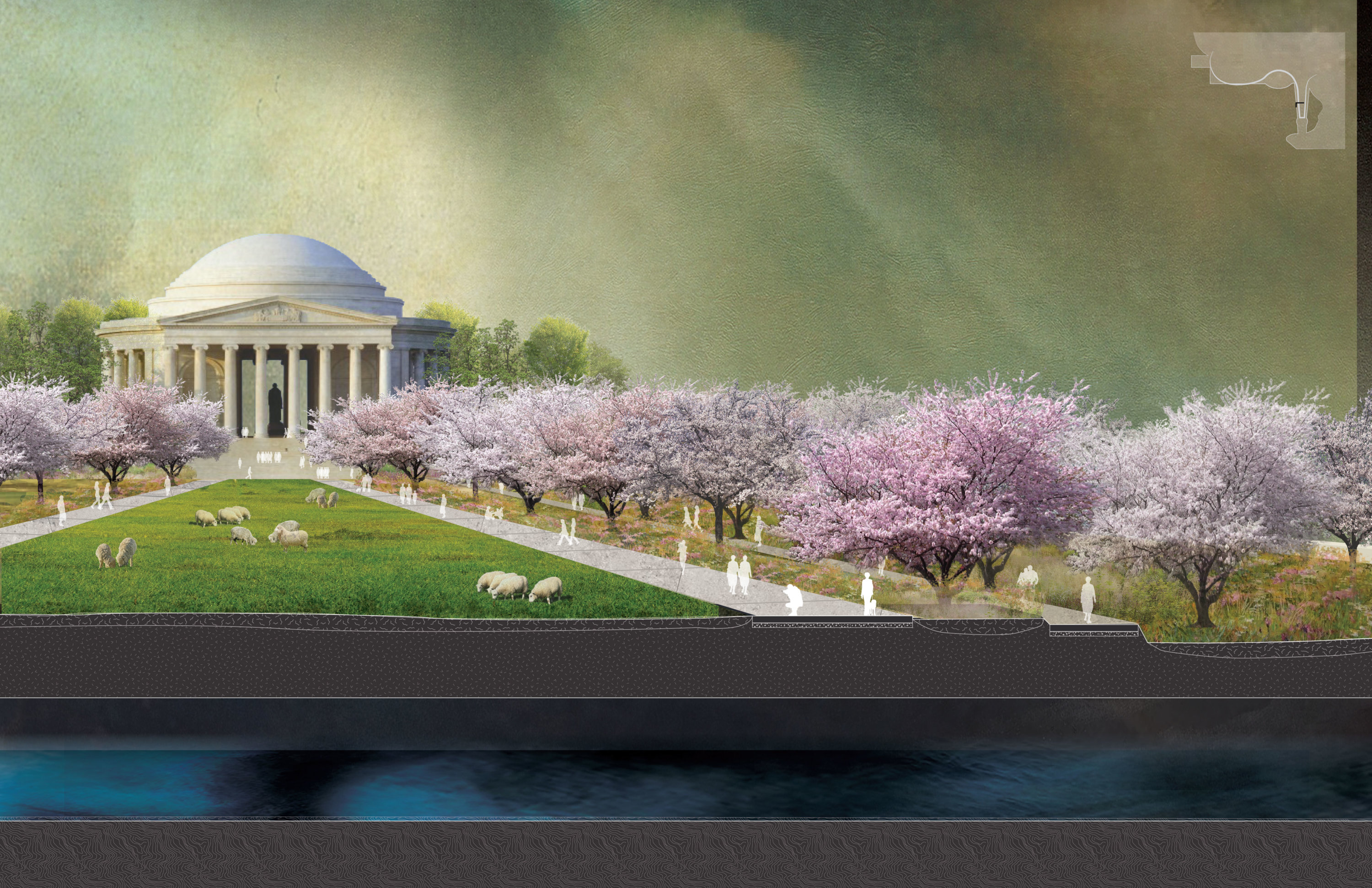
DLANDstudio
DLANDstudio’s renderings include a jetty that stretches west from the Lincoln Memorial to the Potomac River and houses the relocated Martin Luther King, Jr. memorial. Reconstructed wetlands and green walls absorb rising waters, and a land bridge reaches across the Tidal Basin to connect the Jefferson Memorial to the White House. An elliptical reflecting pool sits south of the Washington Monument. Sheep are involved.
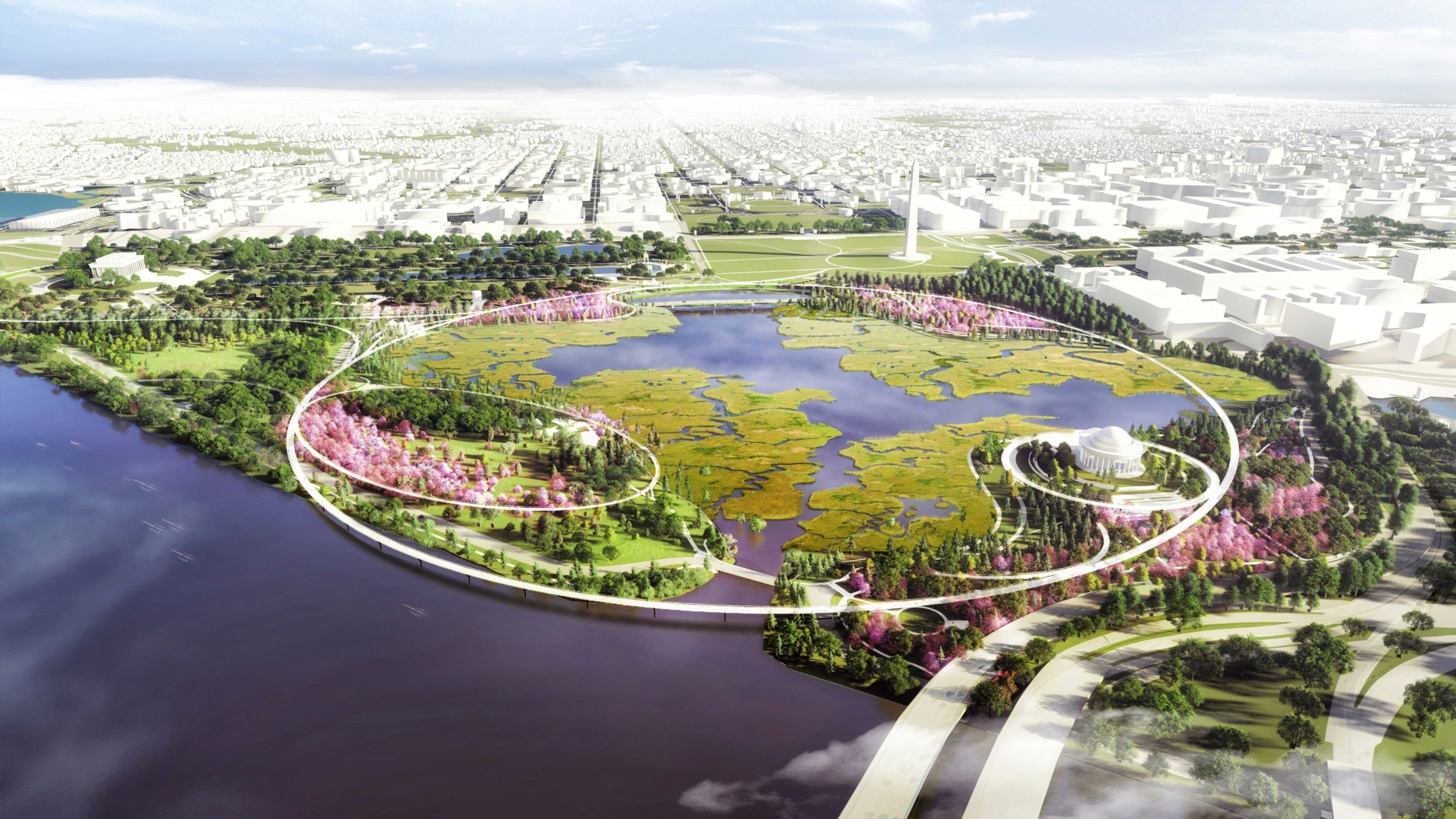
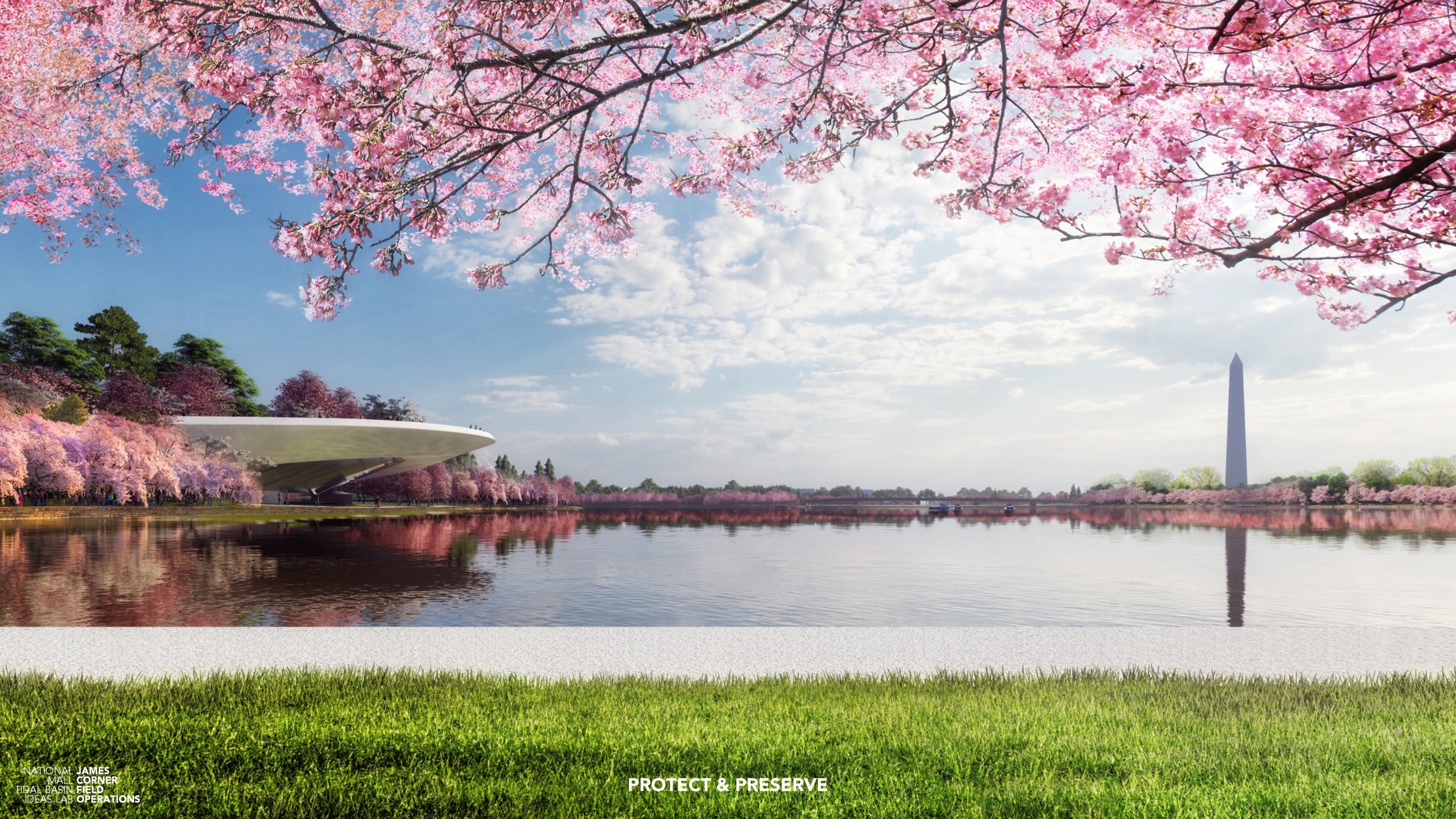
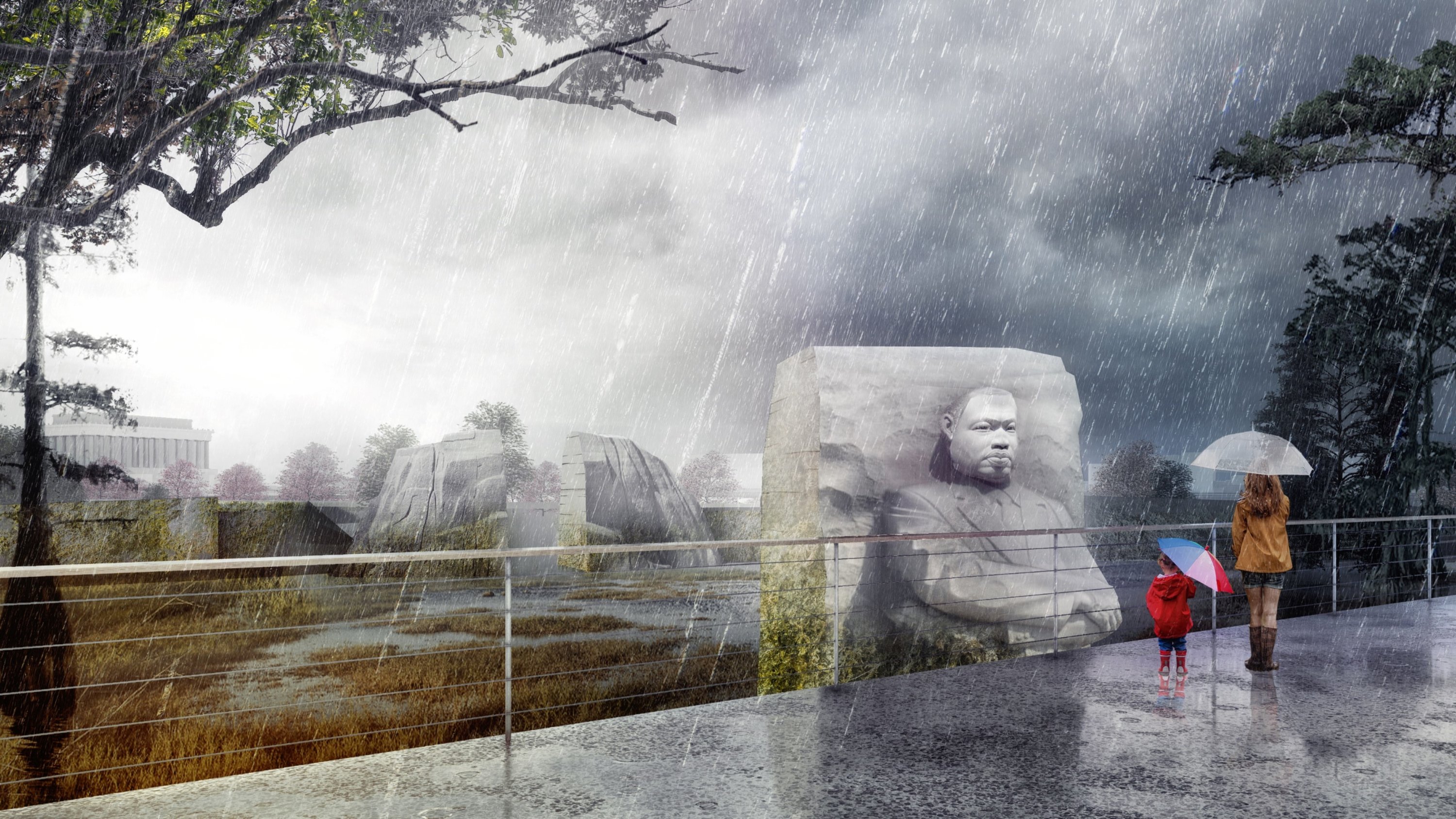
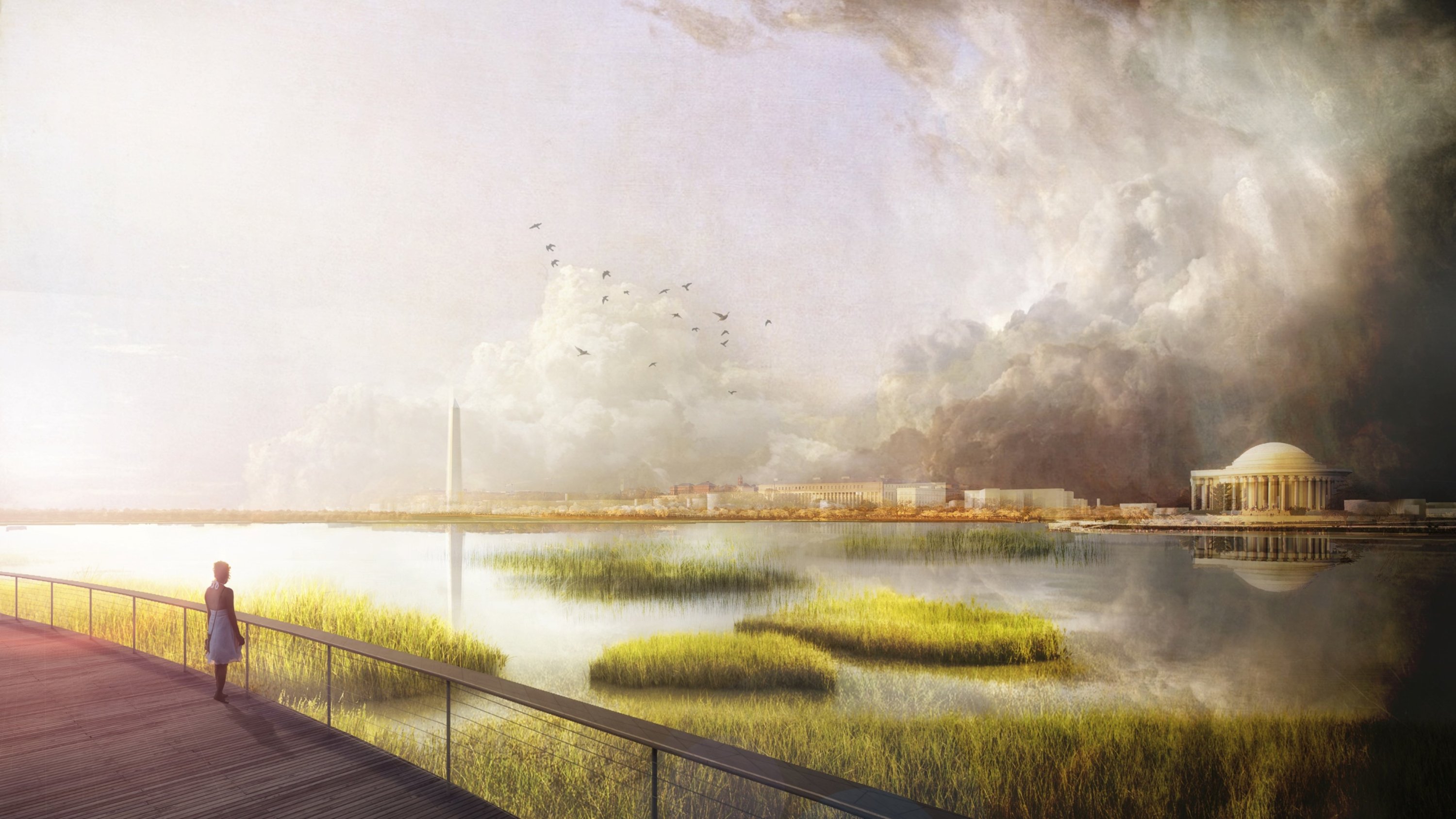
James Corner Field Operations
This group, which is behind New York’s High Line, presents a series of scenarios for reimagining the Tidal Basin: work alongside flooding to treat the memorials as distinct islands, preserve the existing space and install a new visitor’s building, or allow the space to flood and let wetlands and nature take over.
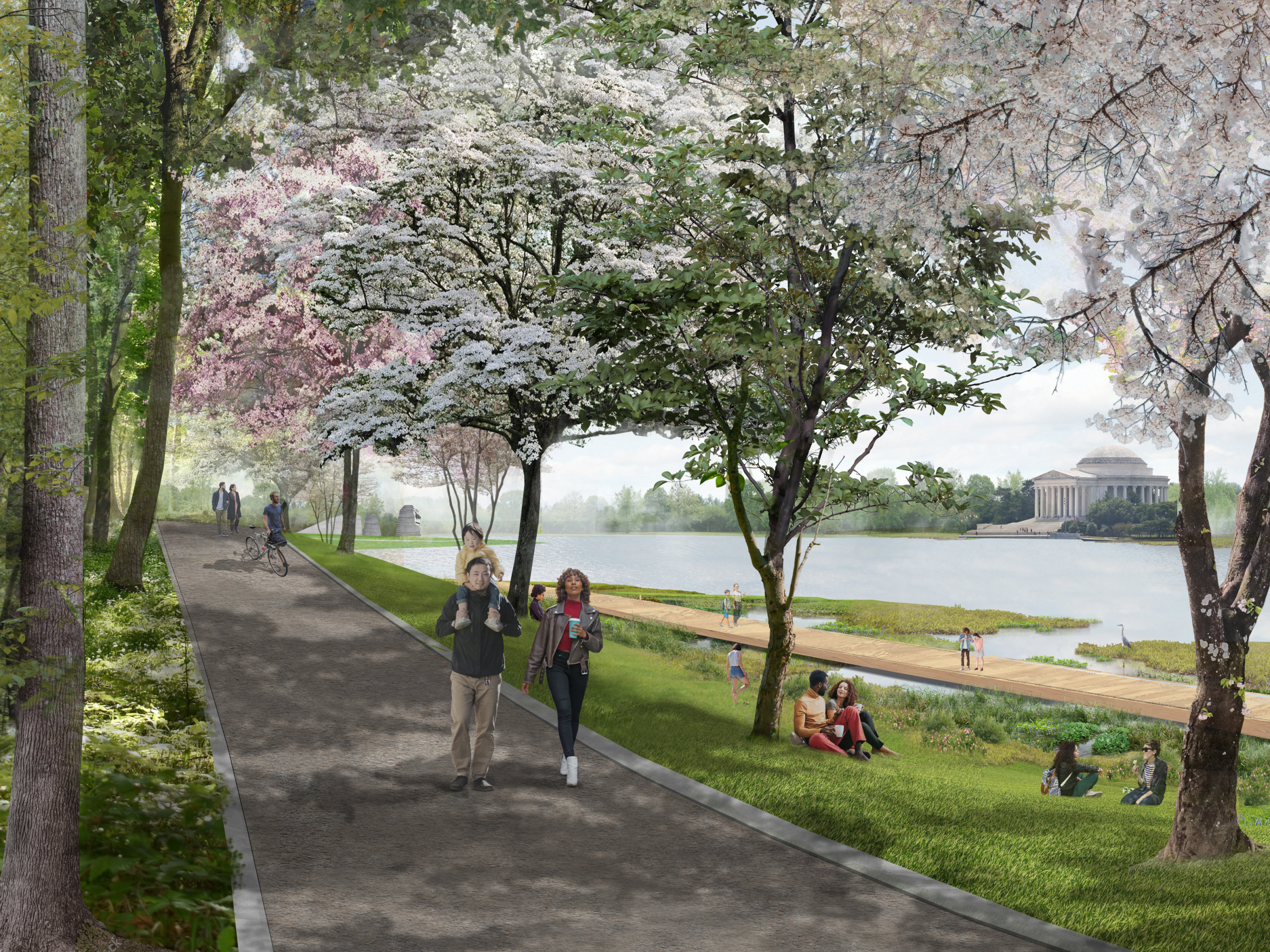
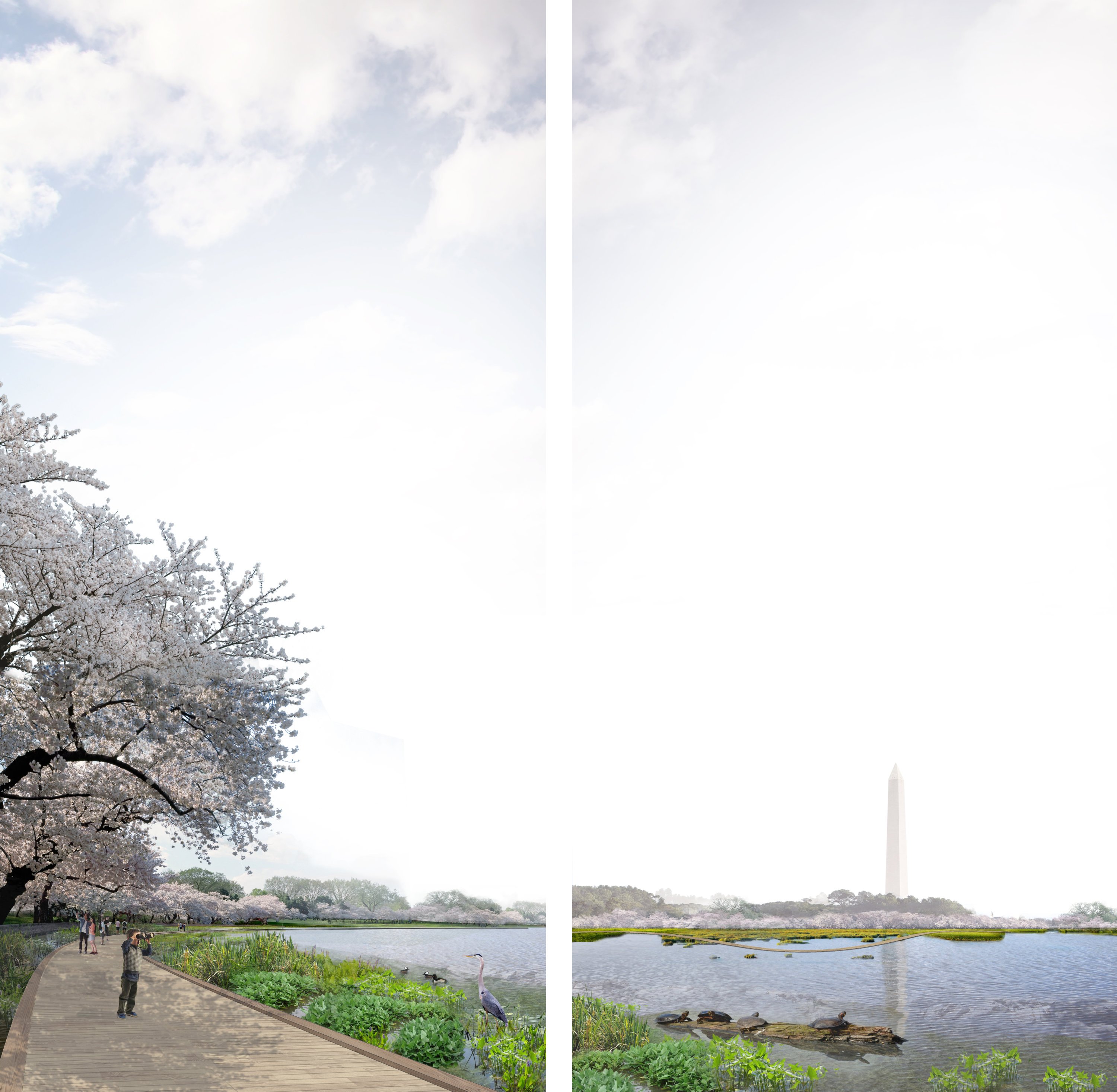
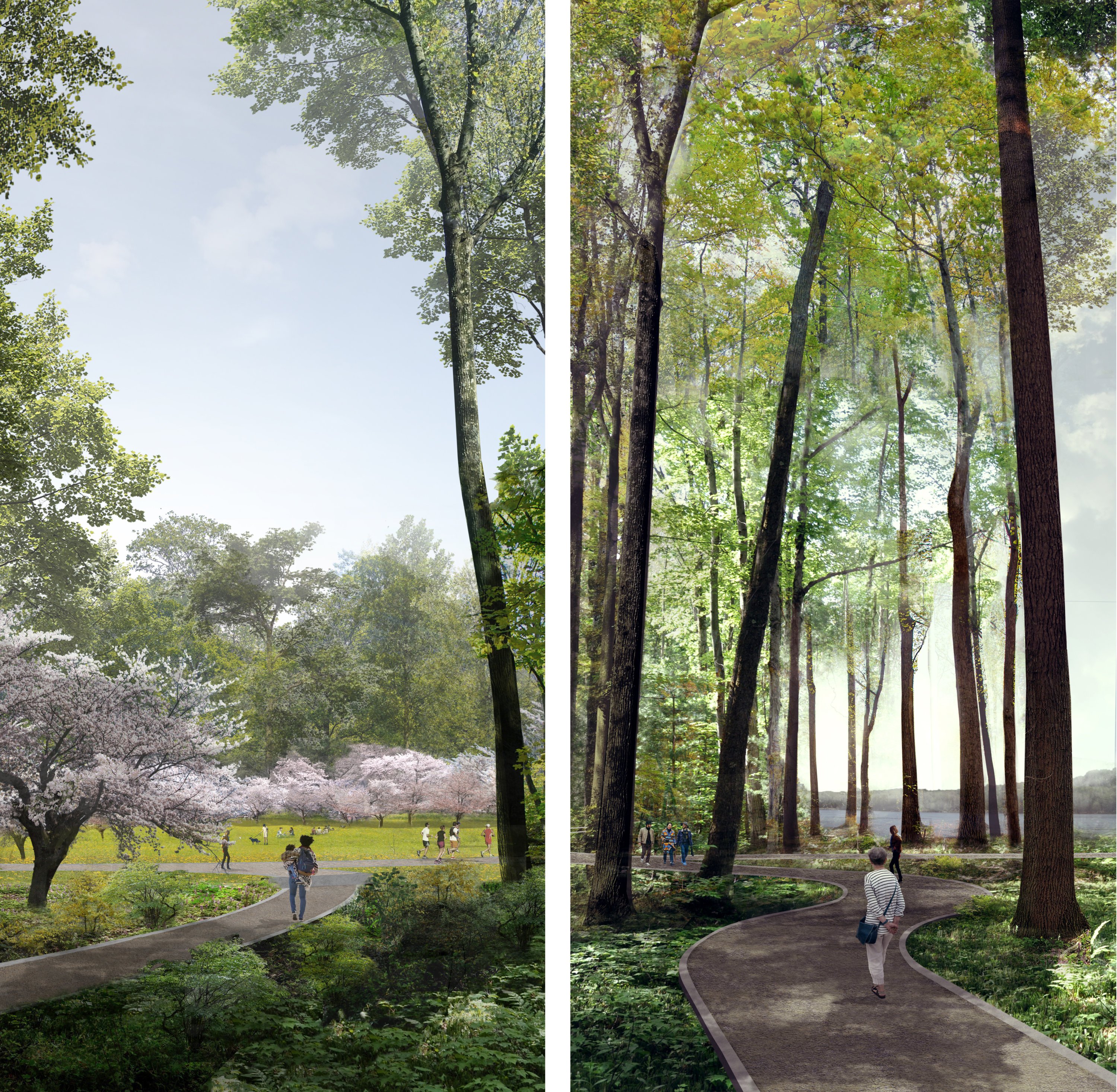
GGN
Over a series of incremental changes between now and 2090, this firm proposes installing earthwork around the Tidal Basin to protect it, while also embracing local ecology via fostering wetlands. A series of boardwalks will allow visitors to explore the marshes.
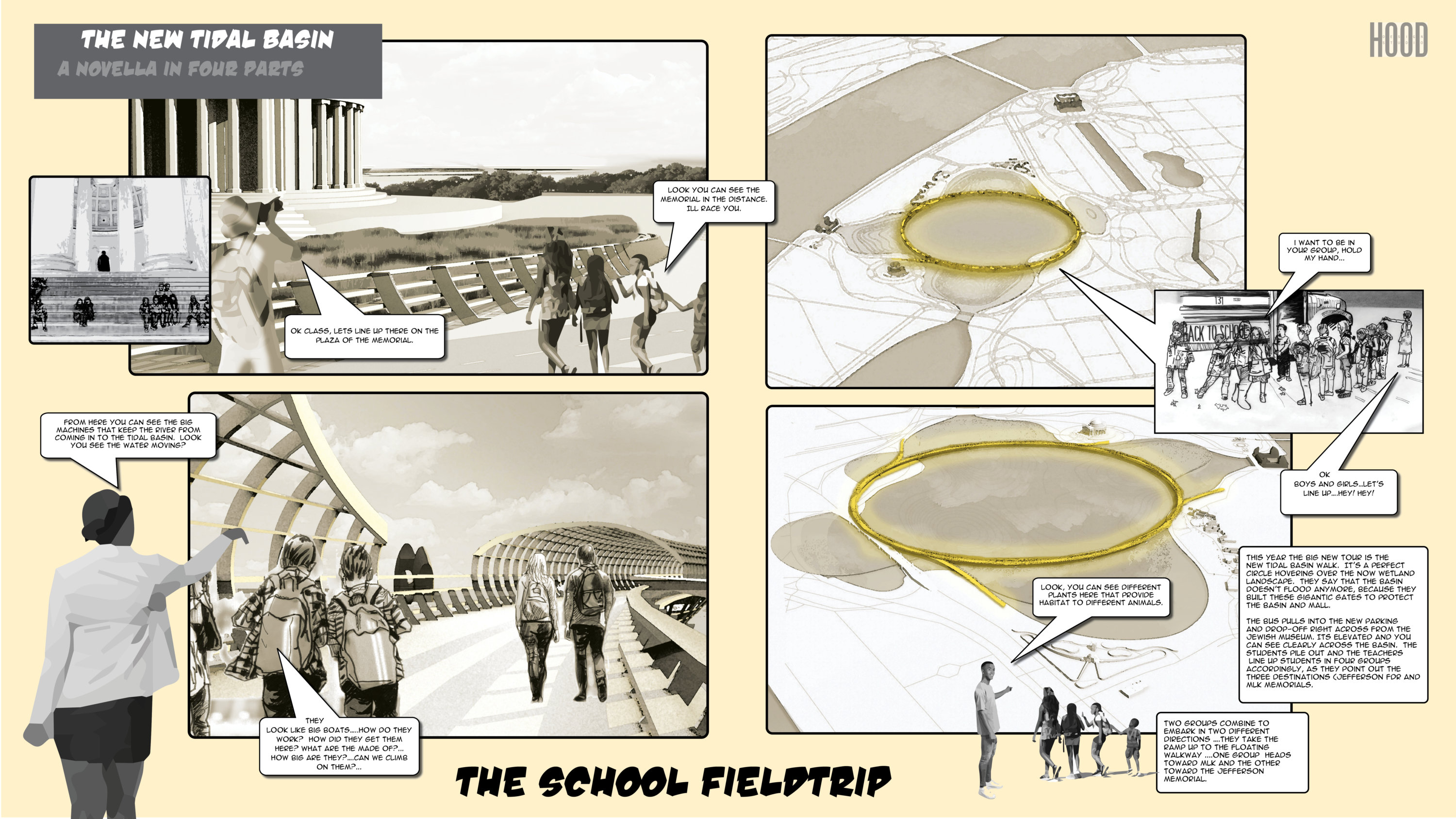
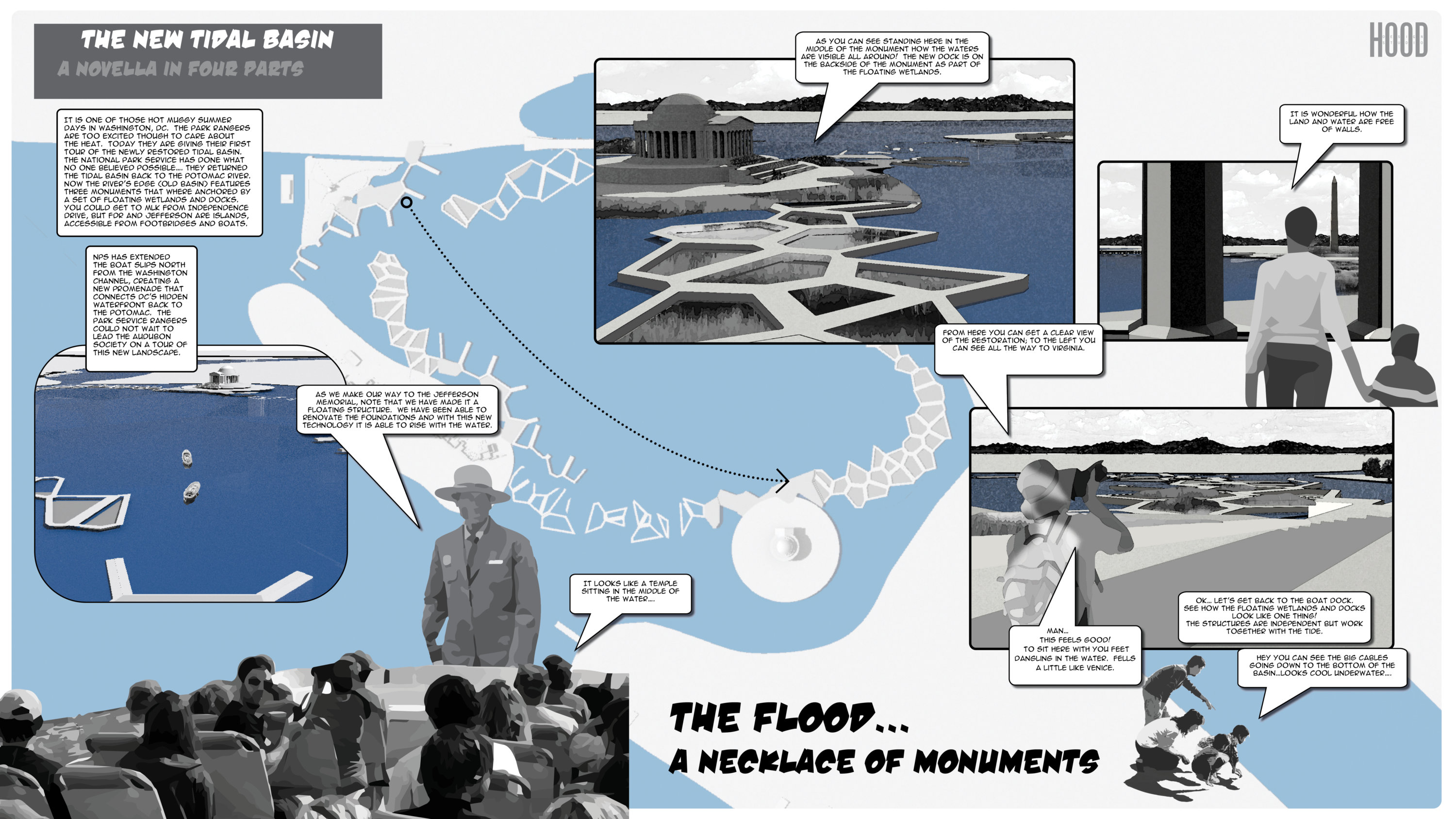
Hood Design Studio
In the firm’s vision (told through novella-like vignettes), the Tidal Basin is now a wetland protected from flooding by gates, while floating bridges and a circular pathway surround the basin. The FDR and Jefferson monuments are floating islands accessible by footbridges and boats, and the cherry trees have been moved to higher ground, replacing the previous baseball fields with a new “Cherry Orchard.” The group also proposes tours and sites to commemorate the relationship throughout history between indigenous and enslaved people and the local landscape.
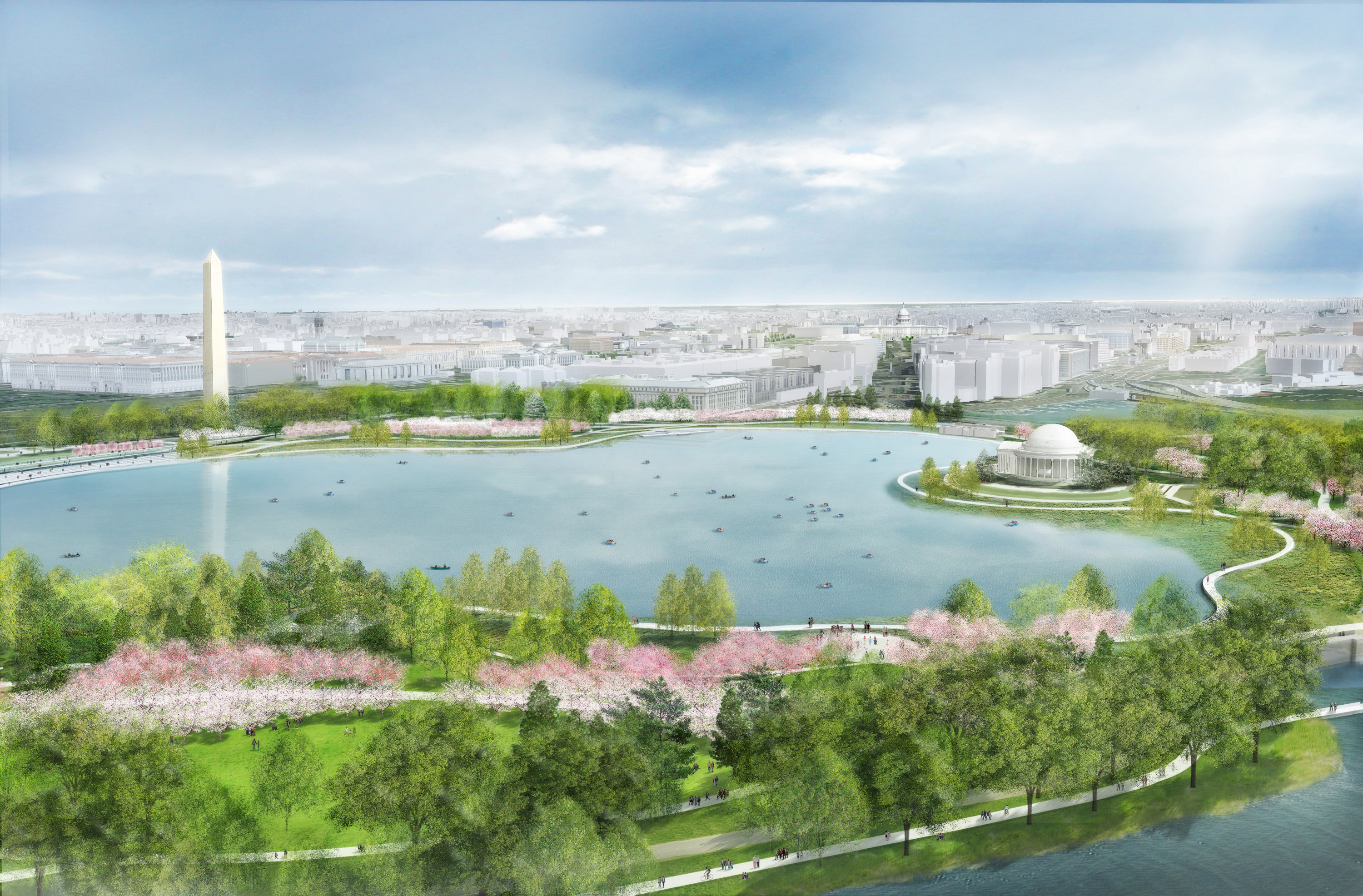
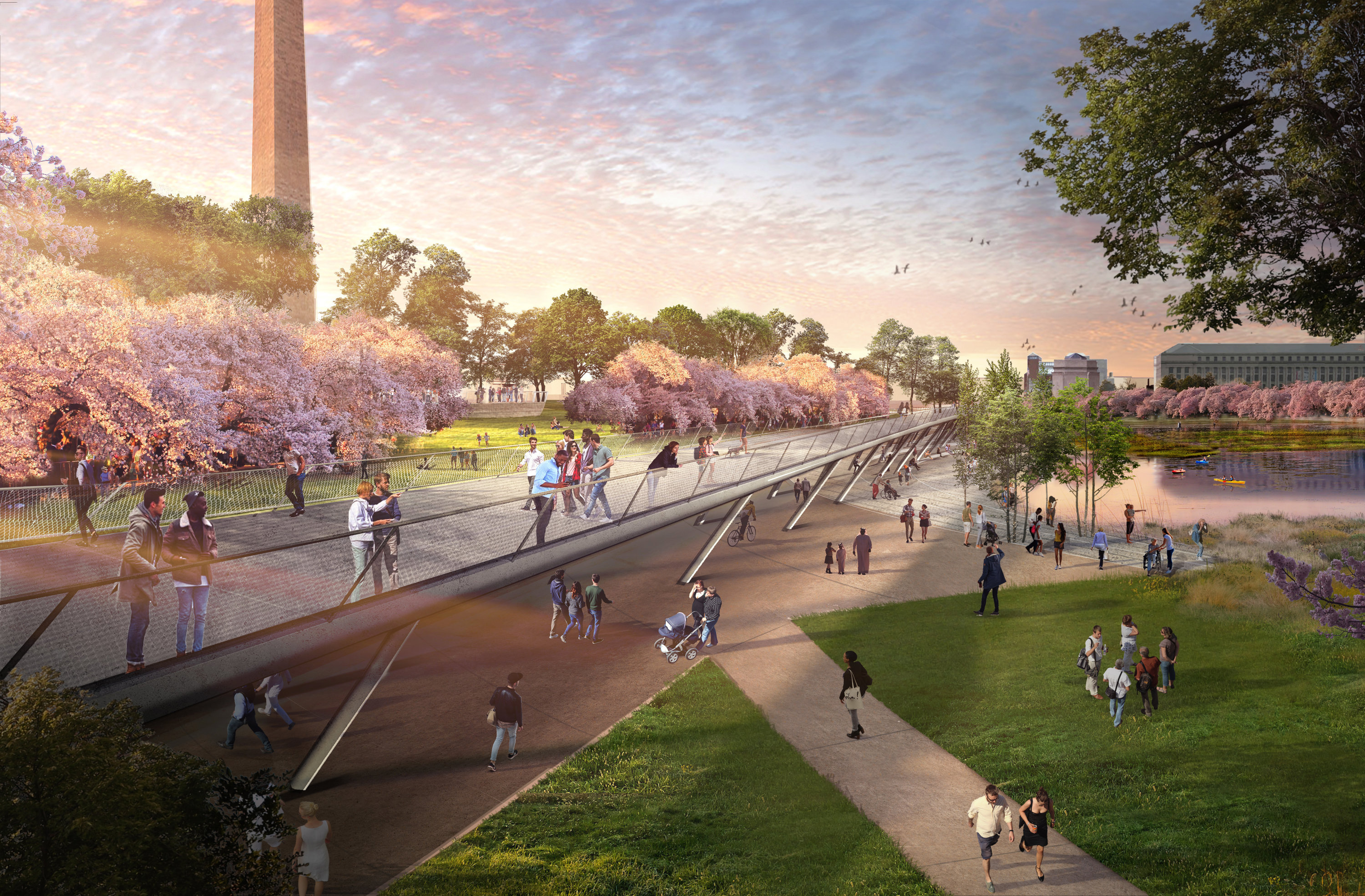
Reed Hilderbrand
The group reimagines the area as a “Washington Commons,” with a variety of recreational spaces for visitors. Folks can walk along the marsh or through the relocated cherry trees, while an elevated pedestrian bridge called Independence Rise connects the area with the city, while also protecting the Mall from flooding.

